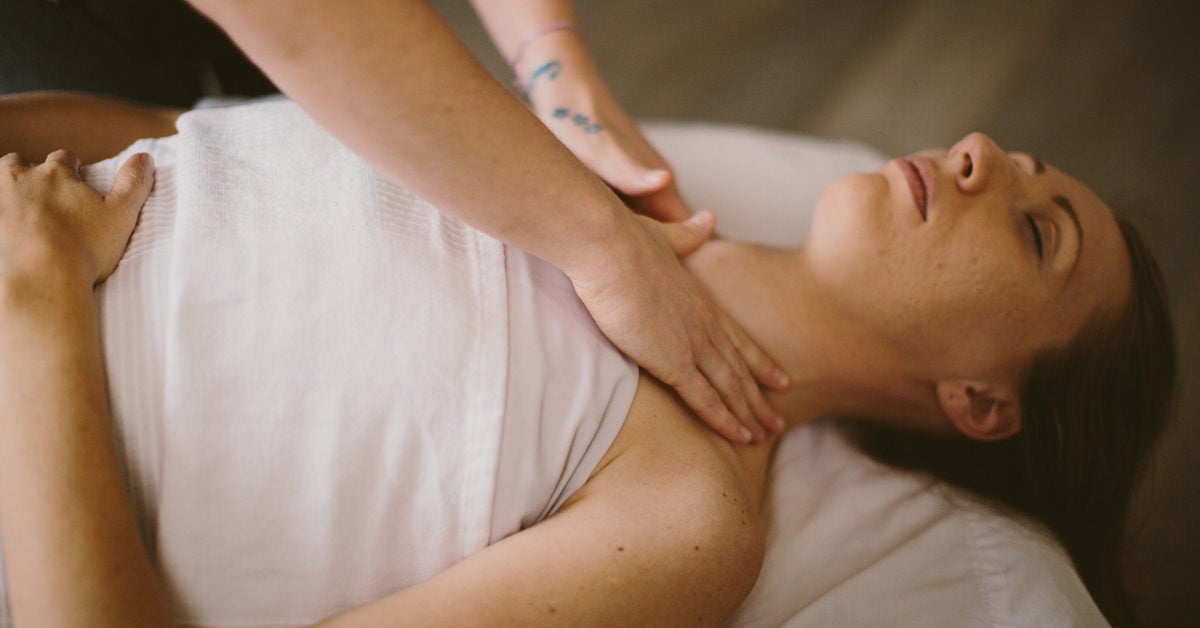This Site Is A Participant In The Amazon Services LLC Associates Program. We may earn money or products from Amazon or the companies mentioned in this post.
To relieve pain after a massage, try applying a cold pack and gently stretching the muscles. Here is everything you need to know about relieving pain after a massage.
Massages can provide numerous benefits, including relaxation, improved circulation, and relief from muscle tension. However, it is not uncommon to experience some pain or discomfort after a massage. This can be due to the release of toxins, muscle soreness from deep tissue work, or the manipulation of tight muscles.
Fortunately, there are several simple and effective ways to alleviate pain and promote healing after a massage. By following these tips, you can enhance the comfort and enjoyment of your massage experience.

Credit: www.healthline.com
Understanding The Cause Of Post-Massage Pain
Understanding the cause of post-massage pain is crucial for finding effective relief. Several factors contribute to this pain, including muscle soreness and inflammation caused by the manipulation of tissues during the massage. It is common to experience different types of pain and discomfort after a massage, such as muscle tenderness or feelings of bruising.
However, there are ways to alleviate this pain. Applying ice or heat to the affected area, gentle stretching, or taking over-the-counter pain medication can provide relief. Additionally, staying hydrated before and after a massage can help prevent soreness. Regular massages can also help reduce post-massage pain over time as your body becomes accustomed to the therapy.
Remember, everyone’s experience may vary, so it’s important to communicate with your massage therapist and listen to your body’s needs.
Tips For Relieving Pain After A Massage
Relieving pain after a massage can greatly enhance your overall experience. Proper hydration is key as it helps flush out toxins and reduces muscle soreness. Rest and recovery techniques also play an important role in minimizing discomfort post-massage. Applying heat or cold therapy can help soothe any inflammation or swelling.
Gentle stretching exercises can further alleviate muscle tension and enhance flexibility. If needed, over-the-counter pain relief options can provide temporary relief. By following these tips, you can ensure a more comfortable and enjoyable post-massage recovery period. Remember to prioritize your body’s needs and listen to any signals of discomfort to ensure a safe and effective healing process.
Frequently Asked Questions For How To Relieve Pain After Massage?
How Long Does Pain Last After A Massage?
Pain can last between 24 to 48 hours after a deep tissue massage, as it’s a common side effect. Drinking plenty of water, using a heating pad, and taking over-the-counter pain medications can help alleviate discomfort.
Is It Normal To Feel Sore After A Massage?
Yes, it’s normal to feel sore after a massage, especially if it was deep tissue or targeted a specific area. Soreness is a sign that your muscles are releasing toxins and undergoing healing. It should subside within a day or two.
What Can I Do To Reduce Pain After A Massage?
To reduce pain after a massage, try taking a warm bath with epsom salts, using a cold compress or ice pack on the affected area, doing light stretches, and getting plenty of rest. Communicate any concerns with your massage therapist as well.
Can I Take Painkillers After A Massage?
Yes, it’s generally safe to take over-the-counter painkillers like ibuprofen or acetaminophen after a massage to alleviate any discomfort. However, always consult with your healthcare provider if you have any specific concerns or medical conditions.
Are There Any Risks Of Pain After A Massage?
While uncommon, there can be some risks associated with pain after a massage, such as bruising, inflammation, or aggravation of existing injuries. It’s essential to communicate with your massage therapist about any pre-existing conditions to ensure a safe and effective treatment.
How Can I Prevent Or Minimize Pain After A Massage?
To prevent or minimize pain after a massage, drink plenty of water before and after your session to stay hydrated, communicate your preferences and any discomfort with your massage therapist, and follow any post-massage recommendations they provide.
Conclusion
To conclude, managing post-massage pain is crucial to fully enjoy the benefits of your session. Whether it’s stretching, applying heat or cold, taking a warm bath, or using over-the-counter pain relievers, there are plenty of options to explore. Prioritizing relaxation, maintaining hydration, and communicating with your massage therapist about your comfort level are also key.
It’s essential to remember that some degree of soreness is normal, especially if you received deep tissue or intense pressure during the massage. However, if the pain persists or is severe, it’s important to seek medical guidance. By implementing these strategies and listening to your body’s needs, you can effectively alleviate pain after a massage and continue enjoying the long-lasting benefits of this therapeutic practice.